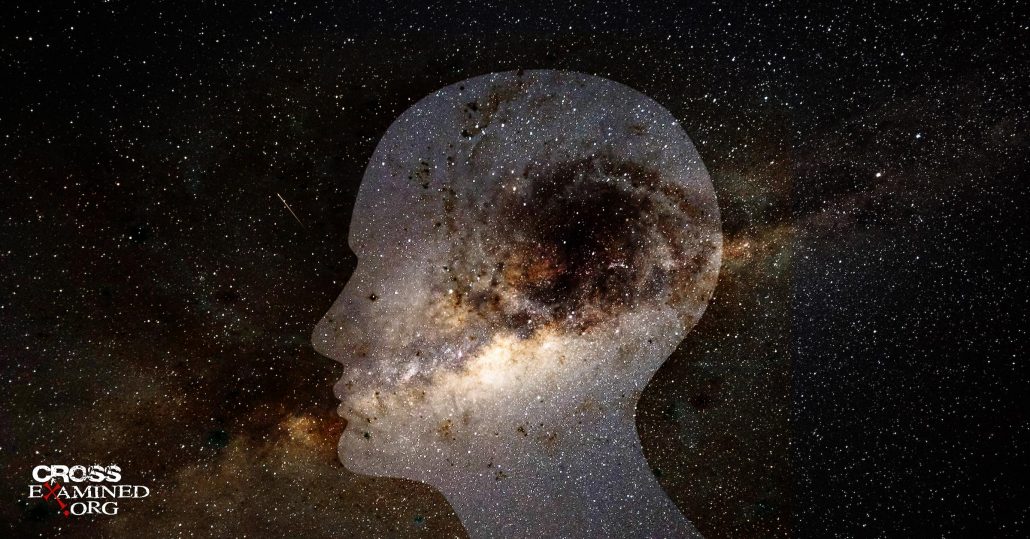By Al Serrato
Many atheists today hold the view that faith and reason are opposites. They view Christians as believing in God “despite the evidence” instead of because of it, and as long as they hold that view, they will not be open to considering the evidence for God’s existence. In my last post, I discussed the importance of precision in language, so as to convey the correct notion that reason underlies faith, as it underlies all sound thinking. Skeptics who realize that there is nothing irrational about “having faith” may eventually be open to considering the evidence for the God of the Bible.

As a picture paints a thousand words, good analogies can go a long way toward making intellectual concepts like this clear. They can help the listener see that they do in fact rely on “faith” all the time. Because no one can know all things with complete certainty, a decision to believe that something is true – that it describes the way things really are – is a decision that relies on faith. We all do it, often intuitively and without much thought because it is simply the way our minds work.
Since the specific question at issue when considering God’s existence is whether “someone” is there, analogies that make that point can be helpful. Of course, the easiest way to know someone is there is to actually see the person. That would constitute direct evidence. But you can also know someone is there by deduction or inference. The footsteps you see in the sand are pretty powerful indicators that someone was recently walking by. Mail-in your mailbox did not spontaneously appear. Or imagine being a police officer coming upon the scene of a burglary; you will strongly suspect someone is inside if you see the broken front door lock and hear movement inside. You may be wrong, but it would be rational for you to conclude that someone is there. If you bring in a police dog that moves to a particular closet in the house, you can be quite sure that someone is behind the door. Despite lacking direct or conclusive knowledge, you would not dismiss these conclusions as being based “on faith,” but would instead recognize that you are employing reason to form conclusions about things you cannot directly see.
Now at this point, the atheist may say “Okay that makes some sense. I can deduce ‘someone is there’ from circumstantial evidence, but I already know that people exist, so it is no surprise that a particular person might be on the beach, or delivering mail, or hiding in the house. Now you want me to believe in a God that no one has any direct experience with?” Yes, in fact, I do.
While certainly different in magnitude, the universe – like the sand on the beach or the contents of the mailbox – is a canvas upon which evidence of God’s existence can be seen. Ponder for a moment the exquisite order and complexity of the universe, the information embedded in life, the existence of consciousness, morality, music, and math – all these bear witness to the Designer’s hand. They are discrete bits of evidence upon which a comprehensive circumstantial case can be built. Science, in other words, can provide the tools, and furnish the support, for a well-ground belief in the need for a transcendent Creator.
The scientific community is already embarked upon a similar exercise, in the hunt for extraterrestrial intelligence. All around the globe, radio telescopes are probing the distant reaches of space, hoping to pick up the telltale signals of intelligent life. Frequency ranges have been devoted to this pursuit by international agreement, so as to increase the chance that signal pollution from Earth-bound sources does not interfere. Hundreds of thousands of dollars have been committed to this effort to find what no one definitively can say exists – life in the cosmos. The effort is called SETI – the Search for Extra Terrestrial Intelligence.
These are not religious fundamentalists at work; they are highly educated and trained scientists who know what so many in academia refuse to acknowledge – that reason can be employed to conclude that “something is out there.” What are these scientists hoping to find? Because they believe they can distinguish random noise – things naturally occurring – from signals that are specified and complex, they believe they can see the blueprint of intelligence in signals that are not random but instead designed to convey information. They look primarily for mathematical equations, trusting that universal laws will be knowable to any sentient being and will be a means to communicate, even if our spoken languages are different. NASA did something similar with its deep space probes Pioneer and Voyager; information encoded in the universal language of math and music even now hurtle further into the abyss, awaiting, perhaps, discovery by some advanced intelligence.
Now, let’s suppose that these scientists begin receiving a coded message. With effort, they eventually decode the language, finding that it consists of four letters. These four letters are arranged into billions of lines of code, which the scientists ultimately realize constitute a blueprint to build an extremely complex machine – a self-replicating machine with thousands of interdependent parts that must assemble themselves, correct errors as they occur and continue functioning in harmony decade after decade. What if scientists could begin working with this code to make changes and to alter the natural order of things? Would this not be enough to convince even the most skeptical that “something” highly intelligent and incredibly powerful was out there? That we are not alone?
So why aren’t more people convinced. After all, we already are the recipients of such directed intelligence. The four-letter language that codes billions of lines of instructions to build a complex machine is, of course, DNA. In short, while the scientific community remains largely materialistic, that façade is starting to crack, as more is learned about the incredibly information-rich nature of DNA, as well as the fine-tuned nature of the laws of the universe. Such information, and such laws, are not random. While some continue to insist that DNA evolved from lifeless matter, they have no mechanism to explain the beginning of DNA. Even the earliest single celled life form required such massive amounts of information that self-assembly is simply implausible.
We all know it intuitively: information requires a source. This alone does not prove the God of the Bible. But knowing that “something” is out there is not a matter of “faith.” Reason itself demands it.
There are none so blind as those who, despite the evidence, continue to refuse to see.
Recommended resources related to the topic:
God’s Crime Scene: The Case for God’s Existence from the Appearance of Design (mp4 Download Set) by J. Warner Wallace
God’s Crime Scene: The Case for God’s Existence from the Appearance of Design in Biology DVD Set by J. Warner Wallace
What is God Like? Look to the Heavens by Dr. Frank Turek (DVD and Mp4)
I Don’t Have Enough Faith to Be an Atheist (Paperback), and (Sermon) by Norman Geisler and Frank Turek
Al Serrato earned his law degree from the University of California at Berkeley in 1985. He began his career as an FBI special agent before becoming a prosecutor in California, where he continues to work. An introduction to CS Lewis’ works sparked his interest in Apologetics, which he has pursued for the past three decades. He got his start writing Apologetics with J. Warner Wallace and Pleaseconvinceme.com.


















Facebook Comments